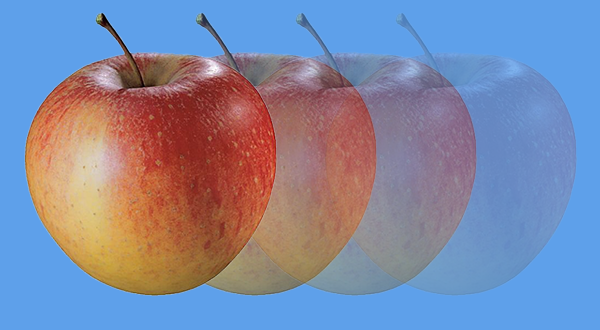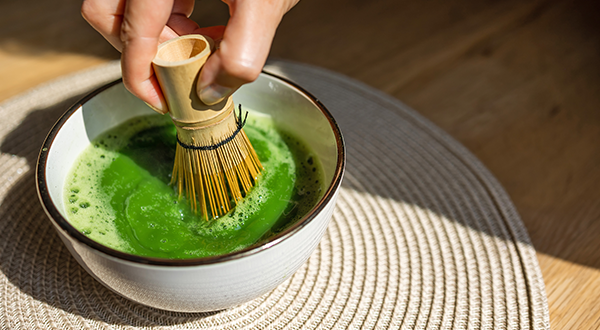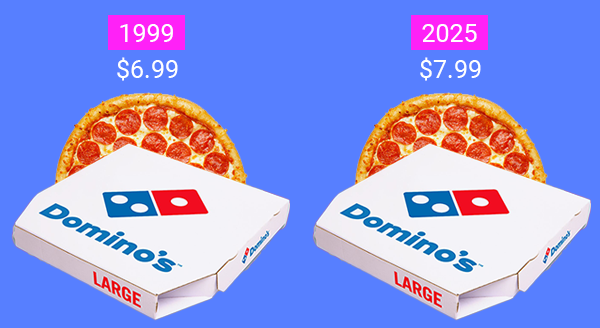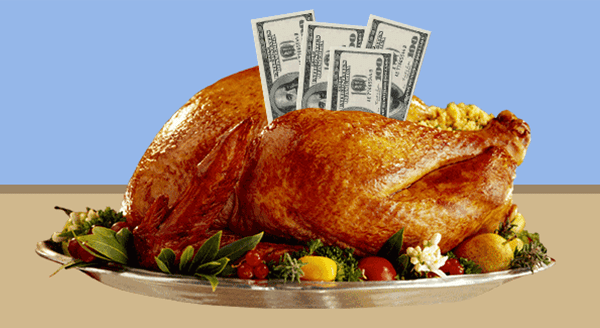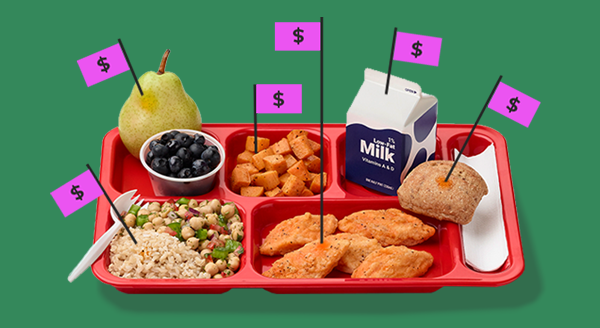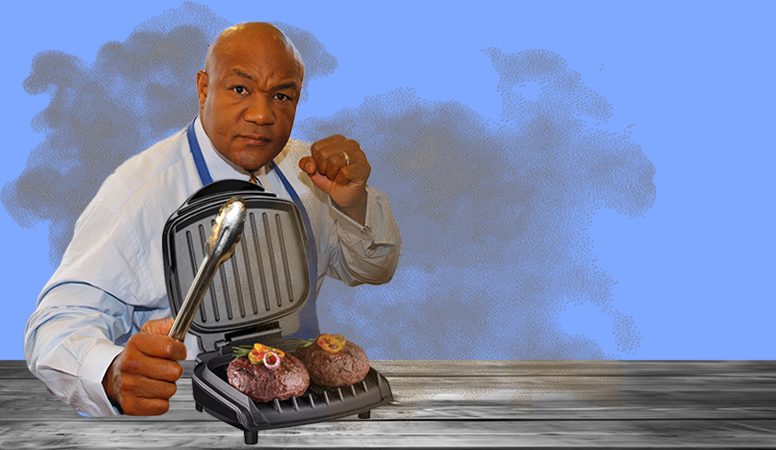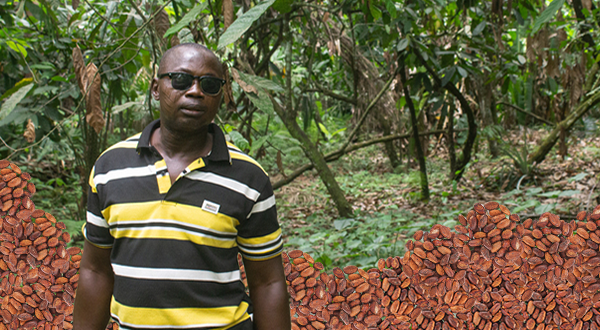Corporate welfare has propped up high fructose corn syrup for decades. It’s unlikely to end anytime soon.

Silos and grain elevators loom over flat prairies at the Archer Daniels Midland processing facility in Cedar Rapids, Iowa. Every day hundreds of trucks haul corn from heartland farms to the facility, where the crop is broken down into starches and liquids before trains with gargantuan tanks ship it out to the rest of the world.
The plant opened more than 50 years ago, assembled with modular panels to enable flexibility, cost-savings, and growth. At the time, Archer Daniels Midland (ADM) expected expansion, as one of the plant’s main functions was making high fructose corn syrup, a revolutionary product.
But today, the saccharine days of corn sweeteners, like those produced by ADM, may be under siege.
Olivia Heller/The Hustle
High fructose corn syrup usage in the US has declined over the last two decades while table sugar, made from cane or beet, has been on the rise.
In the last few months, political figures ranging from Democratic Sen. Bernie Sanders to Robert F. Kennedy Jr., the Trump Administration’s nominee for secretary of health and human services, have advocated against obesity issues connected to high fructose corn syrup. Another politician, Republican Rep. Anna Paulina Luna introduced a bill to ban the ingredient altogether last summer.
But while the criticism of high fructose corn syrup is mainly about nutrition, its emergence and staying power have hinged on government subsidies, tariffs, and political favors connected to corporate largesse. Sugar is an economic issue, too — one that experts say benefits a few powerful entities while the rest of the country bears the cost.
The connections that turned corn into gold
The story of corn can’t be told without Dwayne Andreas as a main character.
When Andreas died in 2016, he was remembered as one of the savviest and most controversial executives of the 20th Century. He became CEO of ADM in 1970 and built the food processing company into the “supermarket of the world.” He famously avoided prosecution in the late 1990s when the Justice Department cracked down on ADM for price fixing (a story later immortalized in Steven Soderbergh’s The Informant).
More than anything, though, Andreas was a connector.
Working out of Decatur, Illinois, this 5-foot-4-inch college dropout forged relationships with Ronald Reagan, Newt Gingrich, Bob Dole, and Mikhail Gorbachev. Some of Andreas’ money even helped bankroll the White House “plumbers” who burglarized the Watergate Hotel. (“Washington,” Andreas once remarked, “is not made up of the smartest people.”)
Dwayne Andreas (second from left) meets with Hubert Humphrey and John F. Kennedy Jr. (Bettman via Getty Images)
Andreas complained that he felt pressured to make these political contributions, but the money he donated earned him plenty of favors in return. And a few years after Watergate, he needed one.
ADM had entered the burgeoning high fructose corn syrup market, which came to the US in the 1960s after Japanese production technology was adopted stateside and took off after sugar prices soared in the mid-1970s. The ingredient, made by breaking down corn starch, added sweetness and texture to processed foods at less than half the cost of table sugar.
ADM capitalized on the demand for alternative sweeteners by more than doubling the Cedar Rapids plant’s capacity for processing high fructose corn syrup. But when sugar prices collapsed from above 70 cents per pound to below 10 cents, high fructose corn syrup was suddenly much less of a bargain — and production slowed. In 1977, corn sweetener plants like ADM’s were operating at 60% capacity.
Fortunately for Andreas, he wasn’t alone in betting on the wrong side of commodity prices. Corn and sugar farmers were in dire financial straits, too.
- Midwestern corn farmers, who’d increased corn supply when its price skyrocketed from ~$1.50 per bushel to as high as $5 after the US Department of Agriculture offered export credits to the Soviet Union in 1972, saw prices fall to ~$2 per bushel in the early 1980s.
- Meanwhile, the decline of sugar prices on the global market left US cane sugar and beet sugar farmers unable to compete on price with growers in places like the Dominican Republic and Jamaica, where labor was cheaper and crops were often subsidized.
A corn farm in Virginia. (Smith Collection/Gado via Getty Images)
To remedy these American farmers’ problems — and, mostly, Andreas’ own — Andreas utilized his Washington connections. In the late ‘70s, he and other corn sweetener companies pushed for Sen. Dole and the Jimmy Carter administration to pass measures that would improve domestic sugar production — even though they technically competed with these producers.
The maneuvering worked: Dole and Carter lent their influence to a 1977 price support bill for domestic sugar growers, giving the farmers more stability for their crop prices. Then, in 1981 and 1982, coinciding with substantial increases to corn subsidies, Reagan signed proclamations that raised the price supports and heightened import tariff rate quotas on foreign sugar.
The import tariff rate quotas essentially assigned a higher tax on sugar imports once they’d reached a set level, making international sugar too expensive for US food companies to buy.
US sugar farmers, whose prices since the 1980s tariff rate quotas have routinely been twice as high as international prices, became these food companies’ best option for table sugar.
But they also saw a viable and cheaper alternative in corn syrup.
“Although ADM does not directly produce sugar,” wrote James Bovard of the Cato Institute, “Congress and the USDA have created a price umbrella under which ADM's production of high fructose corn syrup — a sugar syrup — has become immensely profitable.”
The embrace of high fructose corn syrup
American companies not only rejected the tariff-inflated price of international sugar, they didn’t want to splurge for domestic sugar, either. They wanted high fructose corn syrup, which has typically cost anywhere from one-third to one-half the price of domestic sugar.
Olivia Heller/The Hustle
ADM and other food processing companies could buy cheap, subsidized corn and price its sweetener at a cost below domestic sugar but still high enough to turn a tidy profit.
High fructose corn syrup became the choice sugar for:
- Ice cream
- Baked goods
- Cereal
- Jelly
And then the biggest sugar user of all flipped to high fructose corn syrup.
On January 28, 1980 the Coca-Cola Company revealed that beet and cane sugars were being phased out. Coke said it would allow bottlers to use high fructose corn syrup for up to 50% of its sugars.
In 1983, Pepsi replicated Coke by switching its recipe to 50/50. The next year both companies switched to 100% high fructose corn syrup on the same day.
Pepsi expected to save as much as $60m a year ($180m today) and Coca-Cola expected to save ~$30m (~$90m today). A food processing industry executive estimated the switch would ramp up the nation’s overall use of corn syrup by ~500k tons, to 3m tons annually, marking a nearly 1,000% increase since 1978. Coke alone would now need ~1.1m tons of high fructose corn syrup per year.
Its main supplier was ADM.
Olivia Heller/The Hustle
By the mid-90s, even though high fructose corn syrup only accounted for 10% of ADM’s revenues, the company reaped 30% of its profits from the sweetener, its margins particularly high thanks to America’s consistent supply of cheap, subsidized corn.
In 1985, when Coca-Cola introduced its infamous “New Coke,” fanatical drinkers led by a man named Gay Mullins staged protests and filed a class action lawsuit in a successful bid to get the company to switch back to the classic recipe. But when Coca-Cola capitulated Mullins wasn’t satisfied. He also tried convincing the beverage maker to remove all high fructose corn syrup, to return to the 100% table sugar recipe of “our youth.”
Mullins didn’t stand a chance against the Corn King. Coke and Pepsi use high fructose corn syrup today, and the price of sugar is still inflated by tariffs, price floors, and trade agreements.
Do the sugar import tariff quotas work?
Last month in Washington D.C., a group of US senators held a hearing on the negative health effects of processed foods and sugar.
Sen. Bernie Sanders, called out Congress and the FDA for allowing “large corporations to make huge profits by enticing children and adults to consume ultraprocessed food and beverages loaded up with sugar, salt, and saturated fats.” The remarks came two months after Robert F. Kennedy Jr. described high fructose corn syrup as a “formula for making you obese and diabetic.”
Some researchers have found high fructose corn syrup contributes more to obesity than other sweeteners (and may expedite the growth of cancer cells), while others suggest its impact is no more severe than table sugar. Either way, consumers and some food and beverage companies have taken notice, as table sugar use has risen slightly while high fructose corn syrup use has declined by ~25% since 2000. (Obesity rates have climbed despite the drop in high fructose corn syrup use.)
Olivia Heller/The Hustle
The nomination of Kennedy to secretary of health and human services has prompted speculation that high fructose corn syrup could be targeted for health concerns. But longheld economic strategies are a barrier: corn syrup processors (along with sugar farmers) still benefit from tariffs, a favored trade mechanism of President-elect Donald Trump.
Economists largely agree that tariffs can benefit a country when they safeguard an important industry. For decades, however, researchers and analysts from across the political spectrum — ranging from the conservative Cato Institute to the liberal New Republic — have regarded the sugar tariff-rate quotas as a failure because few parties see a benefit.
In 2023, the nonpartisan Government Accountability Office estimated anywhere from $2.5B to $3.5B in higher costs are borne by consumers as a result of the tariffs, and researchers for the American Enterprise Institute estimated the tariffs prevent the creation of ~20k food production jobs.
Sugar farmers make ~$100k-$190k more per farm because of the tariffs. But sugar farms comprise just ~2m of America’s 893m farm acres, and the number of sugar farming jobs created as a result of the tariffs is estimated to be just 4% more than if there were no tariffs, according to the Government Accountability Office study.
The subsidies for corn go toward a far larger sector, and the Corn Refiners Association told The Hustle that refining corn into products like high fructose corn syrup “supports rural economies, diversifies demand options for American farmers, and gives consumers options that help grow the agriculture bioeconomy.”
But corn production is dominated by large farming operations. And just ~4% of corn gets purchased for high fructose corn syrup. (The vast majority is turned into livestock feed or ethanol.)
Olivia Heller/The Hustle
These studies and figures have done nothing to change the country’s policies toward sugar and high fructose corn syrup, and neither will recent scrutiny from lawmakers, Bruce Babcock, a professor of public policy at the University of California Riverside who’s studied agriculture and agricultural policy for decades, told The Hustle
“The ag industry is wildly successful at protecting their markets and protecting their subsidies,” he says.
ADM, which declined to comment for this story, consistently ranks among the top 5% of all parties in federal lobbying expenditures. Babcock noted the power of the Fanjul family, which dominates Florida’s cane sugar industry and gives frequently to politicians. So do beet sugar farming operations in the Upper Midwest.
They benefit from the subsidies and tariffs. As for the public, Babcock says: “We get nothing.”
Except, of course, unencumbered access to high fructose corn syrup.
Food



